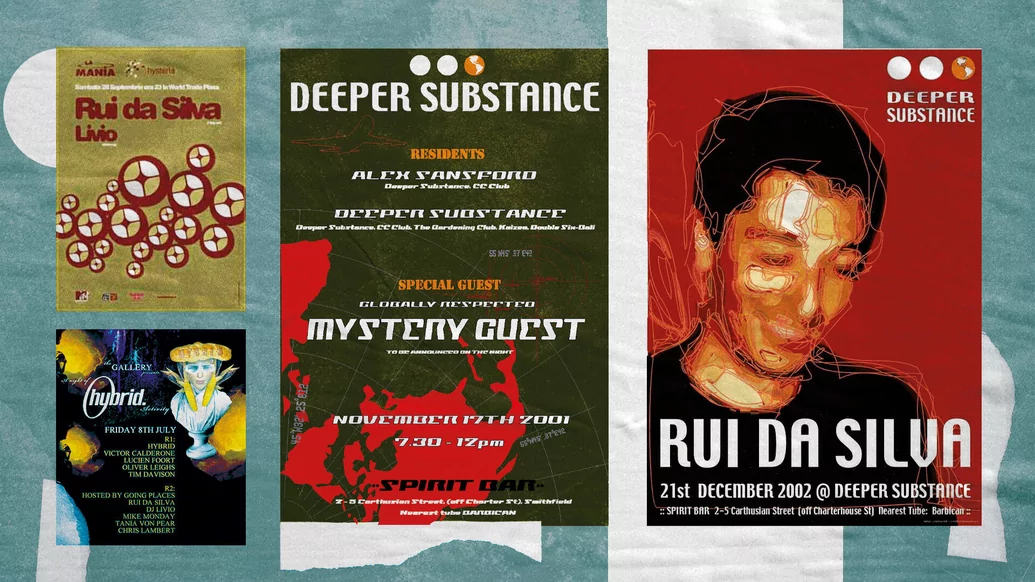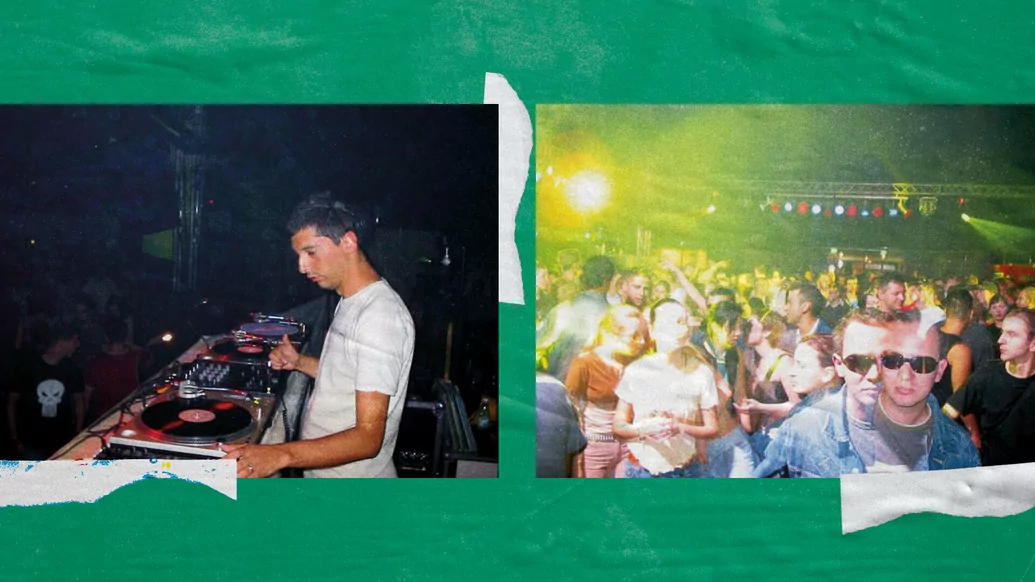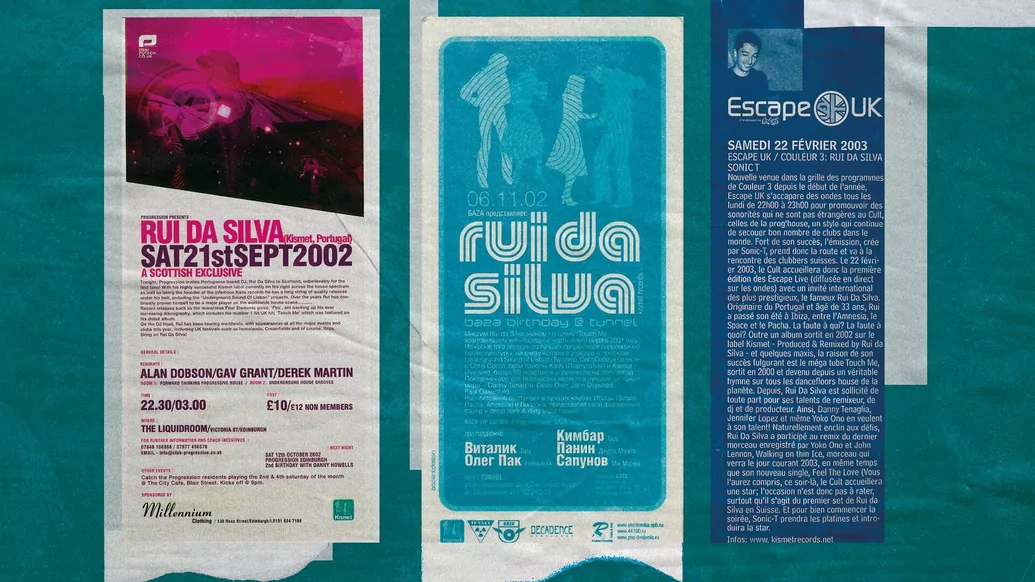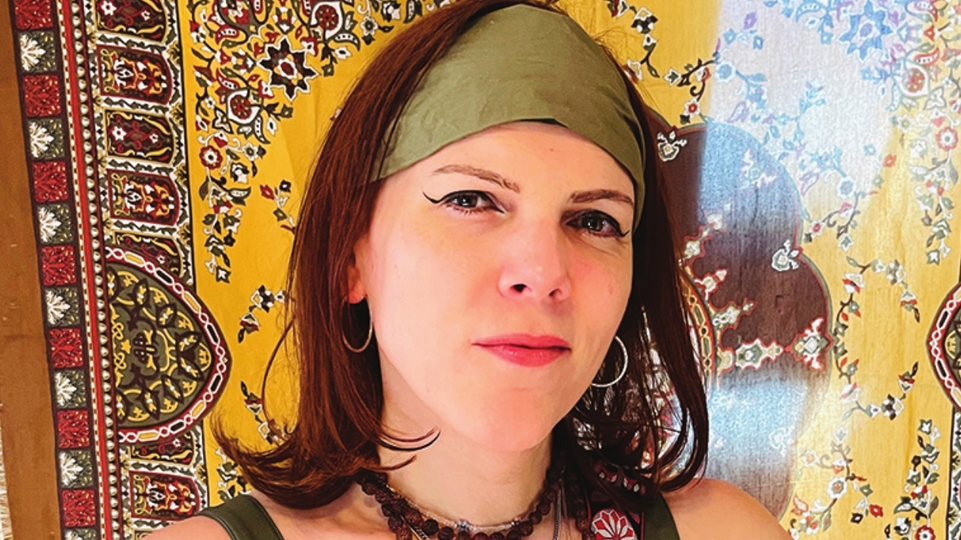
How Rui Da Silva’s progressive house hit ‘Touch Me ft. Cassandra’ broke the pop mould
Twenty years after it first lit up dancefloors around the world, Rui Da Silva and Cassandra Fox's No. 1 hit ‘Touch Me’ is transcending generations with a brand new remix. Bruce Tantum discovers the unlikely story behind this iconic, sing-along chart-topper
The UK chart’s first No. 1 single of 1981 was the saccharine ‘There’s No One Quite Like Grandma’; in 1991, it was Iron Maiden’s turbo-charged ‘Bring Your Daughter... to the Slaughter’. But to kick off 2001, neither a slice of school-choir sentimentality nor a slab of aging rock-god theatrics would do. After all, this was the dawn of a new millennium, technically speaking, when we were all supposed to be zipping around in space. We needed the aural equivalent of a sleek, chrome-plated rocket ship.
That song was ‘Touch Me’, a collaborative track by producer and DJ Rui Da Silva, and North London vocalist and songwriter Cassandra “Cass” Fox. Released on Da Silva’s own Kismet label, the track is almost minimalist in construction, basically serving as a skeletal framework for Fox’s yearning lyrics and bluesy vocals. At its core, it’s little more than a two-chord minor-key pulse, with various bits of filigree introduced at various points to add a bit of dynamics. It was absolutely massive, eventually reaching sales of 400,000.
Prior to ‘Touch Me’, Da Silva had already experienced success in the dance-music arena via his partnership with DJ Vibe as Underground Sound of Lisbon. The pair’s ‘So Get Up’, defined by its bottom-end and oft-sampled series of shouted commands (“Get up! Forget the past!”) was one of the best. The track became an international club smash that hit particularly hard in NYC, where it became something of an unofficial mid-’90s theme song for Junior Vasquez and Danny Tenaglia. “But at that point, dance music was still looked down upon,” says Da Silva from his home in London, where he’s been since 1999. “It was still considered a minor genre, and not as much intertwined with pop music as it became later.” ‘Touch Me’, despite its lack of a typical hit-song structure, was pop to its core.


Beyond the spoken-word ornamentation of tunes like ‘So Get Up’, Da Silva had rarely worked with singers, and after moving to London his friends suggested that he try his hand at a full-fledged vocal number. Around the same time, he was attending the now-defunct London superclub Home. “I was there listening to Paul Oakenfold playing,” he recalls. “I thought, if I ever made a record with a singer, I would make something that he would play here.”
There was one problem: Da Silva didn’t actually know any vocalists. As it happened, luck intervened. “I was walking through Piccadilly Circus and saw this girl singing in the middle of the night,” he recalls. “Cassandra had just come out of some pub. At that point, she hadn’t really done anything — maybe something like a small single with a garage act, but that was about it. I got her to come into the studio, and that was it.”
As many of the best songs do, ‘Touch Me’ came together easily. Once in the studio, the two tried a few things out, with Fox sketching out lyrics for Da Silva’s embryonic backing track. The next day, she returned with completed lyrics and they recorded the song.
Taking a cassette of the results home with him, Da Silva immediately realised he had something special. “I was listening to the record over and over, and couldn’t get enough of it,” he says with a bit of surprise in his voice, even 20 years later. “Now looking back, the record doesn’t even have that traditional pop structure of intro, verse, chorus, verse, chorus, bridge, chorus. It was structured more like the way I understood a club record should be — a journey. But it also worked as a pop song.”


With the summer season already heating up, Da Silva rushed to press up a batch of promo copies and started handing them out to his big-name DJ connections. The first on the list was, of course, Oakenfold, who at that point was heading up his long-running Perfecto party at Pacha in Ibiza. “That first night, he played it five times, and by the end of that summer, everyone was going crazy for the record,” Da Silva says.
‘Touch Me’ was a runaway club smash, yet it was still months before the record was officially released. That wasn’t a marketing ploy: The reason behind that holdup was a familiar guitar-squiggle lurking in the background, which was sampled from Spandau Ballet’s ‘Chant No. 1’. Even though ‘Touch Me’ hadn’t yet come out, the band had gotten wind of the record and was making outrageous demands, which led to week after week of fruitless negotiations. “They basically wanted ownership of everything,” he sighs. “So I just ended up removing that guitar.” (There are actually three versions of the vinyl floating around: one with the guitar part, one with a re-recorded guitar, and one with no guitar at all.) The situation still seems to grate at Da Silva. “Litigation is not a place where you want to be,” he says. “It’s about who has the deepest pockets, and not who is actually right or wrong.”
It may not have been intentional, but the release’s delay had the happy side effect of boosting demand to the point where Da Silva was confident of its success. “I knew it was going to be either No.1 or No. 2,” he claims. And sure enough, the track, finally released as 2000 slid into 2001, debuted in the top spot — displacing the Bob the Builder theme ‘Can We Fix It’, as it happens. When it was released in 1981,‘Chant No. 1’ only made it to No. 3: Success, they say, is the best revenge.


The track's never really gone away — hit singles never really do — but now, to mark 20 years since the song’s creation, the Portuguese-born Da Silva has teamed up with Leicester duo PAX for a new version of the tune, reworked with the modern dancefloor in mind. But why mess with near-perfection? The reasoning, according to Da Silva, is simple: There’s a demand for it. “Every month I get requests from people ranging from bedroom producers to the top DJs of the world who want to reinterpret or sample the original,” he says. “It seemed like there is still a lot of interest.”
And perhaps it was time for an update, anyway. “For some modern dancefloors, you have to use a new language that doesn’t exist in the original ‘Touch Me,” he explains. “It’s almost like a new version of a pop song. Before you might have had verse, bridge, chorus — but now you have a verse and a build and a drop, which in a way has come to replace the chorus as far as energy goes.”
Sure enough, there’s a huge drop, along with a pronounced build, an array of updated sounds, and even more of a machine-tuned sheen than the original. The vocals are still dominant, but now it’s the song’s all-consuming throb that produces the track’s steam heat.
Da Silva has largely left the international-dance-music-superstar life behind. He lives a relatively quiet life in leafy Bloomsbury, close to the British Museum. His studio is a five-minute walk from home, but he’s generally not spending his days banging out club hits anymore. “I’ve always been much more of a studio person, and my focus has been going further and further in that direction,” he says. I’ve been helping out a lot of other DJs who reach out to me, wanting help to be set up properly for their touring. And I’ve been producing with other artists and musicians in more traditional terms, where my work is not so active in terms of creation. It’s a lot more healthy on the brain and the body.”
As any artist would be, Da Silva is a bit resigned to the fact that there’s one song in his discography that overwhelms all the others. “I’ve come to terms with accepting it,” he allows. But he is also proud that he’s created something that’s been able to transcend the passage of time. “It’s more than just that it reached No. 1,” he says. “It’s the impact that it’s had on a generation of people, and it still has that impact. A few years ago, when I was in Ibiza, there were some young lads and girls who were about 18, and they didn’t know the record. But it was playing, and there they were, hearing it for the first time, and they were experiencing it and loving it the same way I was when I did when I took that cassette home years ago. I don’t know how that can happen — maybe it’s something in the frequencies — but it’s magic.”





